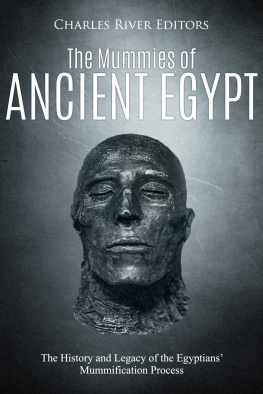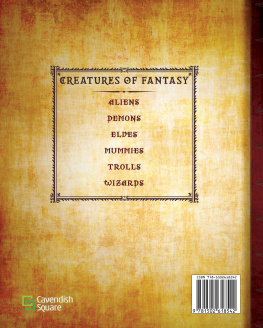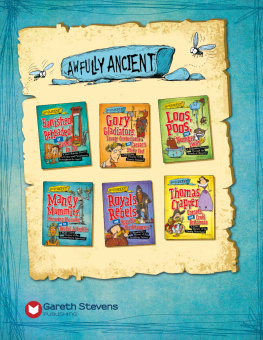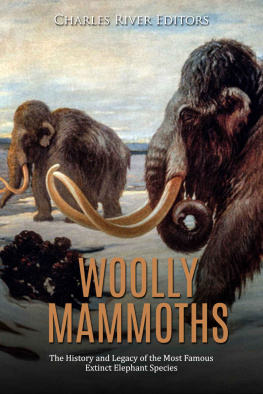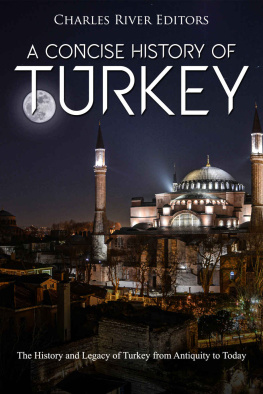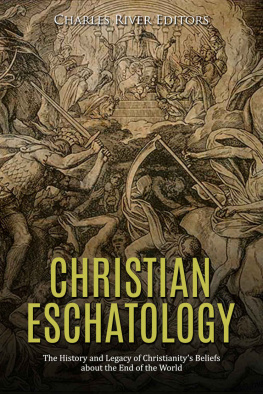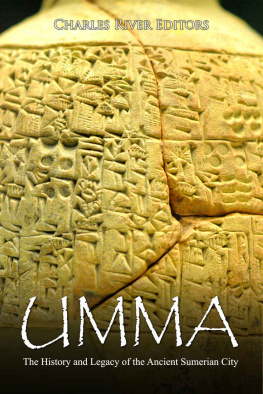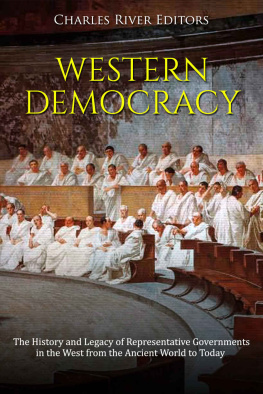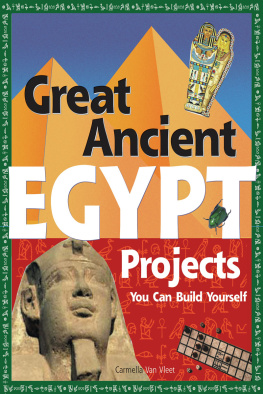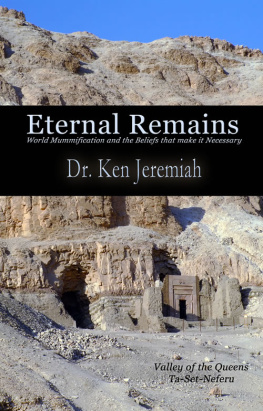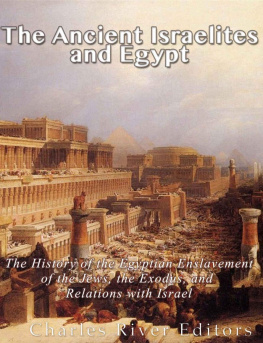Charles River Editors - The Mummies of Ancient Egypt: The History and Legacy of the Egyptians’ Mummification Process
Here you can read online Charles River Editors - The Mummies of Ancient Egypt: The History and Legacy of the Egyptians’ Mummification Process full text of the book (entire story) in english for free. Download pdf and epub, get meaning, cover and reviews about this ebook. year: 2020, publisher: Charles River Editors, genre: Religion. Description of the work, (preface) as well as reviews are available. Best literature library LitArk.com created for fans of good reading and offers a wide selection of genres:
Romance novel
Science fiction
Adventure
Detective
Science
History
Home and family
Prose
Art
Politics
Computer
Non-fiction
Religion
Business
Children
Humor
Choose a favorite category and find really read worthwhile books. Enjoy immersion in the world of imagination, feel the emotions of the characters or learn something new for yourself, make an fascinating discovery.
- Book:The Mummies of Ancient Egypt: The History and Legacy of the Egyptians’ Mummification Process
- Author:
- Publisher:Charles River Editors
- Genre:
- Year:2020
- Rating:3 / 5
- Favourites:Add to favourites
- Your mark:
- 60
- 1
- 2
- 3
- 4
- 5
The Mummies of Ancient Egypt: The History and Legacy of the Egyptians’ Mummification Process: summary, description and annotation
We offer to read an annotation, description, summary or preface (depends on what the author of the book "The Mummies of Ancient Egypt: The History and Legacy of the Egyptians’ Mummification Process" wrote himself). If you haven't found the necessary information about the book — write in the comments, we will try to find it.
The Mummies of Ancient Egypt: The History and Legacy of the Egyptians’ Mummification Process — read online for free the complete book (whole text) full work
Below is the text of the book, divided by pages. System saving the place of the last page read, allows you to conveniently read the book "The Mummies of Ancient Egypt: The History and Legacy of the Egyptians’ Mummification Process" online for free, without having to search again every time where you left off. Put a bookmark, and you can go to the page where you finished reading at any time.
Font size:
Interval:
Bookmark:
By Charles River Editors
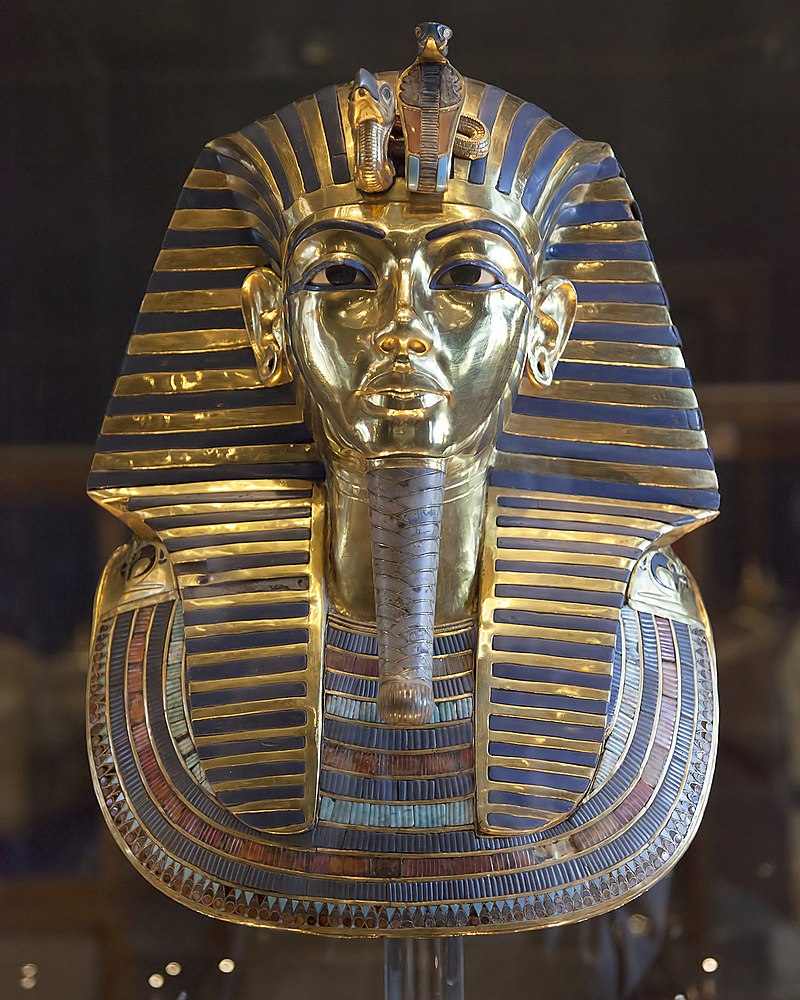
Roland Ungers picture of Tutankhamuns funerary mask

Charles River Editors is a boutique digital publishing company, specializing in bringing history back to life with educational and engaging books on a wide range of topics. Keep up to date with our new and free offerings with this 5 second sign up on our weekly mailing list , and visit Our Kindle Author Page to see other recently published Kindle titles.
We make these books for you and always want to know our readers opinions, so we encourage you to leave reviews and look forward to publishing new and exciting titles each week.
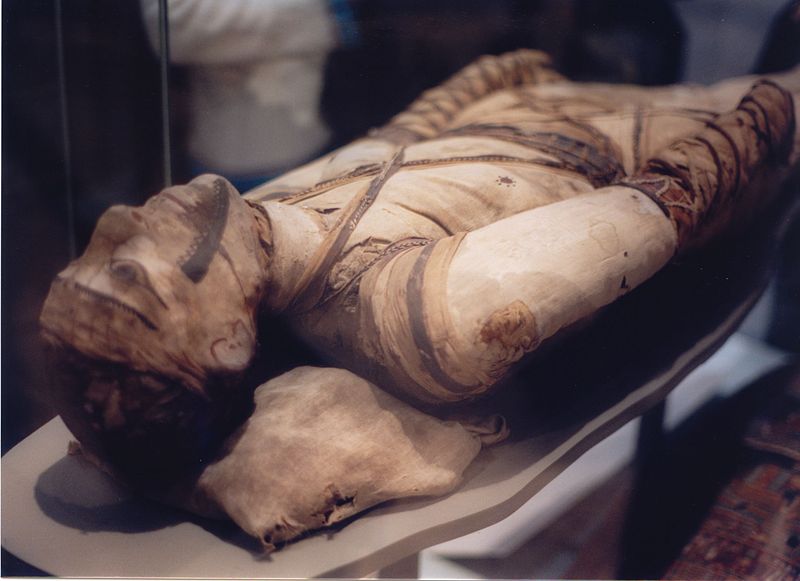
A picture of an Egyptian mummy in the British Museum
"Praise be unto thee, O Osiris, lord of eternity, Unnefer, Heru-khuti (Harmachis), whose forms are manifold, and whose attributes are majestic, Ptah-Seker-Tem in Annu (Heliopolis), the lord of the hidden place, and the creator of Het-ka-Ptah (Memphis) and of the gods [therein], the guide of the underworld, whom [the gods] glorify when thou settest in Nut. Isis embraceth thee in peace, and she driveth away the fiends from the mouth of thy paths. Thou turnest thy face upon Amentet, and thou makest the earth to shine as with refined copper. Those who have lain down (i.e., the dead) rise up to see thee, they breathe the air and they look upon thy face when the Disk riseth on its horizon; their hearts are at peace inasmuch as they behold thee, O thou who art Eternity and Everlastingness! Hymn and Litany to Osiris in The Book of the Dead
Africa may have given rise to the first human beings, and Egypt probably gave rise to the first great civilizations, which continue to fascinate modern societies across the globe nearly 5,000 years later. From the Library and Lighthouse of Alexandria to the Great Pyramid at Giza, the ancient Egyptians produced several wonders of the world, revolutionized architecture and construction, created some of the worlds first systems of mathematics and medicine, and established language and art that spread across the known world. With world-famous leaders like King Tut and Cleopatra, its no wonder that todays world has so many Egyptologists.
What makes the accomplishments of the ancient Egyptians all the more remarkable is that Egypt was historically a place of great political turbulence. Its position made it both valuable and vulnerable to tribes across the Mediterranean and the Middle East, and Egypt had no shortage of its own internecine warfare. Its most famous conquerors would come from Europe, with Alexander the Great laying the groundwork for the Hellenic Ptolemy line and the Romans extinguishing that line after defeating Cleopatra and driving her to suicide.
Perhaps the most intriguing aspect of ancient Egyptian civilization was its inception from the ground up, as the ancient Egyptians had no prior civilization which they could use as a template. In fact, ancient Egypt itself became a template for the civilizations that followed. The Greeks and the Romans were so impressed with Egyptian culture that they often attributed many attributes of their own cultureusually erroneouslyto the Egyptians. With that said, some minor elements of ancient Egyptian culture were, indeed, passed on to later civilizations. Egyptian statuary appears to have had an initial influence on the Greek version, and the ancient Egyptian language continued long after the pharaonic period in the form of the Coptic language.
In addition to being ubiquitous parts of daily life, Egyptian religion and mythology were also complex, and while Egyptian society was polytheistic like other ancient civilizations, thats where the comparisons end. Religion was so pervasive that it heavily influenced funerary practices and the belief in an afterlife, and deities like Osiris and Isis (who are still well known today) had become so firmly ingrained that even the Ptolemaic pharaohs, who considered themselves purely Greek, embraced Egyptian deities and assimilated the Greek and Egyptian cultures. In fact, Cleopatra often had herself depicted as Isis.
Given the abundance of funerary artifacts that have been found within the sands of Egypt, it sometimes seems as though the Egyptians were more concerned with the matters of the afterlife than they were with matters of the life they experienced from day to day. This is underscored most prominently by the pyramids, which have captured the worlds imagination for centuries. The pyramids of Egypt are such recognizable symbols of antiquity that for millennia, people have made assumptions about what they are and why they exist, without full consideration of the various meanings these ancient symbolic structures have had over the centuries. Generations have viewed them as symbols of a lost past, which in turn is often portrayed as a world full of romance and mystery. This verbal meaning has become associated with the structures through the tourism industry, where intrigue obviously boosts ticket sales. In fact, the Egyptian pyramids are so old that they were also drawing tourists even in ancient times. In antiquity, the Great Pyramid of Giza was listed as one of Seven Ancient Wonders of the World, and it is the only one still surviving today.
Though the ancient tombs have been extensively plundered, they still stand as gateways to the afterlife that provide a murky window into the past of a fascinating civilization. Most importantly, the relatively untouched tomb of the young King Tutankhamun offered clear insight. Many of the objects that were discovered in Tutankhamuns tomb were clearly made specifically for him and his burial, such as the coffins, funerary masks, canopic equipment and statues. Other objects, such as the furniture, clothing, and chariots, were obviously items that had been used during Tutankhamuns lifetime. The motifs found upon many of his possessions depicted him in triumph over his enemies. For example, a painted wooden chest bears a fine example of such a scene; the king is shown in his chariot, followed by his troops, attacking a group of Nubians. Scenes depicting aggression and triumph over Egypts enemies by Egypts king are classical examples of Egyptian kingship.
To accomplish all the necessities the Egyptians believed in, they relied on spells and invocations, which were collected in a series of funerary texts such as the Pyramid Texts . By the era of the New Kingdom, the most popular funerary text was The Book of the Dead , one of the most evocative titles of literature in the history of humankind. Its mystical writings offer a glimpse into a realm of magical thinking beyond the skills of most writers of fiction. Resplendent with highly accomplished artwork, The Book of the Dead has enraptured scholars and laymen for centuries.
People werent the only ones being given such burials by the Egyptians. To them, the gods and goddesses were all around them and could be seen daily in nature, so nearly every animal found in ancient Egypt, both domestic and wild, was associated with a god or goddess, which can be seen in Egyptian art where deities are often depicted with human bodies and animal heads. Since deities were associated with certain animals, all animals of a specific species were given divine and protected status. The reverence that ancient Egyptians had for certain animals evolved during the long duration of Pharaonic history until by the Late Period animals of specific species were mummified by the thousands as offerings for their associated deities. For instance, ibises were mummified for the god Thoth, while cats were mummified for the goddess Bastet. Modern archaeologists have uncovered most of the Late Period animal mummies in the region near Saqqara, which has become known as the Sacred Animal Necropolis.
Font size:
Interval:
Bookmark:
Similar books «The Mummies of Ancient Egypt: The History and Legacy of the Egyptians’ Mummification Process»
Look at similar books to The Mummies of Ancient Egypt: The History and Legacy of the Egyptians’ Mummification Process. We have selected literature similar in name and meaning in the hope of providing readers with more options to find new, interesting, not yet read works.
Discussion, reviews of the book The Mummies of Ancient Egypt: The History and Legacy of the Egyptians’ Mummification Process and just readers' own opinions. Leave your comments, write what you think about the work, its meaning or the main characters. Specify what exactly you liked and what you didn't like, and why you think so.

